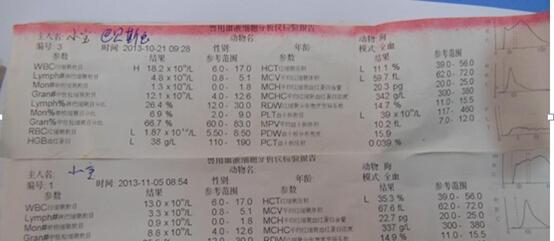Canine babesiosis is an important tick-borne pathogen with a global distribution.
I. Life cycle and dissemination
Babesia spores are usually infected by an intermediate host tick and enter the canine skin through saliva during a blood-sucking process.
Mode of transmission: In addition to the transmission of Babesia gibseri through tick bites, Babesia gibseri is transmitted directly through dogs and dogs, and the bitten dogs are more susceptible to Babesia gibseri infection.
II. Clinical symptoms
Multiple organ dysfunction syndrome due to hemolytic anemia and systemic inflammatory response syndrome is the most clinical symptom of Babesia canis.
May be due to immune mechanisms, sequestration of the spleen, or depletion of platelets during hemolysis or vascular injury during agglutination.
III. Diagnosis: blood smear staining, PCRmethod
Blood smear staining method, blood smears from capillaries (ear tips and toenail slits), compared with blood collected from central veins, are more diagnostic for Babesia.
IV. Case analysis
sick dog, depressed

The blood routine of the sick dog (before and after treatment), the above is the blood routine at the time of visit, showing that white blood cells are elevated, red blood cells, hemoglobin, hematocrit, and mean hematocrit are low.
Babesia canis, parasitic in red blood cells, has acute angle and pear-shaped arrangement in pairs, 4um*7um.
The arrows in the blood smear point to black dots in the erythrocytes of Babesia, and the shape of individual erythrocytes changes.
The biochemical indexes of the affected dogs showed that BUN (urea nitrogen), CRE (creatinine), ALb (albumin) were decreased
V. Treatment
1. Body surface deworming
The body surface is mainly to repel ticks.
2. Kill blood protozoa
Use acriflavine hydrochloride injection, deep intramuscular injection of 0.2ml/kg, once a day for 3 days, azithromycin 10mg/kg, added to 5% glucose and sodium chloride 100ml, intravenous drip, once a day, for 4 days
3. Fluid Support
Plasma supplementation, blood transfusion for severe anemia.
Six. Summary
Babesia canis is a blood parasitic disease transmitted by ticks. It is caused by Babesia canis, Babesia gibbsii, and Babesia wechnerii. The parasites can be observed through blood smears.
Seven, prevention
1. Regular deworming to remove internal and external parasites, especially ticks.
2. Try to avoid playing in the grass. After going out, carefully check whether there are ticks attached to your pet's body.
3. Closely observe the pet's spirit, appetite, mucous membrane color, urine color, etc. If there is any abnormal situation, seek medical attention in time.
4. Follow the doctor's advice, do not feed or stop the medicine without permission.
